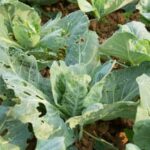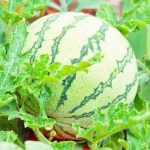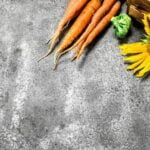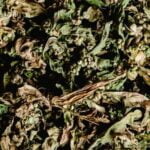When it comes to cultivating a thriving vegetable garden, the choice of soil is crucial. Many gardeners turn to peat as a popular option due to its numerous benefits. Peat, made up of decomposed plant material found in bogs or marshes, offers unique properties that can enhance the growth and yield of vegetables.
However, as with any gardening amendment, there are pros and cons to consider. In this article, we will explore whether peat is truly good for vegetable gardens and provide valuable insights for making an informed decision.
Peat’s ability to improve soil structure and retain nutrients makes it a widely favored choice among vegetable garden enthusiasts. As an organic matter, peat helps create a loose and crumbly texture that allows roots to penetrate easily and access vital oxygen. Additionally, the water retention capabilities of peat can be beneficial in dry climates or areas prone to droughts, ensuring adequate hydration for plants without drowning their roots.
While peat offers several advantages for vegetable gardens, it is essential to examine both sides of the coin before deciding whether to incorporate it into your garden. One significant concern related to peat usage is its impact on the environment.
The extraction process involves draining wetlands, which results in the release of large amounts of carbon dioxide into the atmosphere and contributes to global warming. Another drawback is that peat has limited nutrient content, meaning additional fertilizers may be necessary for optimal plant growth.
Understanding Soil Composition and Nutrient Requirements for Vegetable Gardens
Soil composition plays a crucial role in the success of vegetable gardens. Understanding the makeup of soil and its impact on plant growth is essential for gardeners looking to achieve optimal results. Additionally, knowing the specific nutrient requirements of vegetables is key to providing them with the necessary elements for healthy development. This section will delve into these topics and introduce how peat can enhance soil structure and retain nutrients.
The composition of soil refers to its physical and chemical properties, including its texture, organic matter content, and nutrient levels. These factors influence a plant’s ability to access water, oxygen, and essential nutrients. A well-balanced soil that is rich in organic matter allows for optimal root penetration, which promotes strong plant growth.
In terms of nutrient requirements, vegetable gardens typically need a range of macronutrients (such as nitrogen, phosphorus, and potassium) as well as micronutrients (such as iron, manganese, and zinc). These nutrients are necessary for different aspects of plant development, from leaf production to fruit formation. Gardeners often need to supplement their soil with fertilizers or amendments to ensure adequate nutrition.
Peat can be beneficial for vegetable gardens because it improves soil structure and helps retain nutrients. Peat acts as a sponge-like substance that holds moisture while allowing excess water to drain away. This property aids in preventing both underwatering and overwatering issues that may cause root rot or other problems. Additionally, peat has excellent porosity characteristics that promote aeration within the soil, allowing roots to breathe easily.
Furthermore, peat enhances the cation exchange capacity (CEC) of soil by attracting positively charged ions like calcium, magnesium, and potassium. As these nutrients adhere to the peat particles, they become readily available for uptake by plant roots when needed. Peat also contributes organic matter to the soil over time as it decomposes slowly.
Overall, understanding the importance of soil composition and nutrient requirements for vegetable gardens lays the foundation for successful gardening. Peat can be a valuable tool in enhancing soil structure and nutrient retention, ultimately aiding in achieving healthy plant growth. The next sections will explore the specific advantages and disadvantages of using peat in vegetable gardens, as well as alternative options to consider.
Pros of Using Peat in Vegetable Gardens
Improved Water Retention
One of the major benefits of using peat in vegetable gardens is its improved water retention capabilities. Peat has a high moisture-holding capacity, which means it can absorb and retain water for longer periods. This is particularly advantageous in areas with dry climates or where rainfall is irregular.
When peat is added to the soil, it acts like a sponge, holding onto moisture and slowly releasing it to plant roots as needed. This can help prevent plants from drying out and reduces the frequency of watering required. Improved water retention also ensures that plants have access to a steady supply of moisture, promoting healthier growth and higher crop yields.
Enhanced Aeration and Root Penetration
In addition to its water retention properties, peat also enhances the aeration and root penetration within the soil. Peat is made up of organic matter that decomposes slowly over time, creating air pockets within the soil structure. These air pockets allow oxygen to reach plant roots more easily, improving their ability to take in nutrients and aiding in overall plant respiration.
Furthermore, the fibrous nature of peat helps loosen compacted soils, allowing roots to penetrate deeper into the ground. This enhances nutrient uptake and supports stronger root development, leading to healthier plants.
Maintaining Stable pH Levels
Peat can help maintain a stable pH level in vegetable gardens, which is crucial for optimal plant growth. The pH scale measures acidity or alkalinity on a scale from 0 to 14; most vegetables prefer a slightly acidic pH range between 6 and 7. Peat has an inherently low pH level (around 4), which can counterbalance high levels of alkalinity found in some soils.
By incorporating peat into garden beds or potting mixes, gardeners can adjust the pH level closer towards neutrality, creating an ideal environment for vegetable plants. This stability in pH ensures that essential nutrients are readily available to plants, promoting their overall health and productivity.
Case Studies and Testimonials
Many experienced gardeners have had success using peat in their vegetable gardens. These case studies and testimonials serve as evidence of the positive effects of peat on plant growth. For example, one gardener may report increased crop yields and improved soil structure after incorporating peat into their garden beds.
Another testimonial may highlight the enhanced water retention capabilities of peat during a particularly dry season. These real-life experiences provide valuable insights into the benefits of using peat in vegetable gardening, giving confidence to those considering its use in their own gardens.
Overall, the pros of using peat in vegetable gardens are numerous and significant. Improved water retention, enhanced aeration and root penetration, and stable pH levels all contribute to healthier plants with higher crop yields. The successes shared by experienced gardeners further support the benefits of incorporating peat into vegetable garden soil.
While there are some concerns associated with peat extraction and limited nutrient content, these drawbacks can be mitigated through proper management practices and consideration of alternative options. Moving forward, it is essential for gardeners to weigh these pros and cons carefully when deciding whether or not to use peat in their vegetable gardens, taking into account their specific gardening needs and environmental priorities.
Cons of Using Peat in Vegetable Gardens
Environmental concerns associated with peat extraction
One of the main drawbacks of using peat in vegetable gardens is the environmental impact of its extraction. Peat is typically obtained by harvesting or draining peat bogs, which are valuable ecosystems that support a diverse range of plant and animal species. The extraction process can lead to habitat destruction, loss of biodiversity, and increased greenhouse gas emissions. Additionally, the draining of peatlands for extraction can contribute to climate change by releasing stored carbon dioxide into the atmosphere.
To mitigate these environmental concerns, alternatives to peat can be considered for vegetable gardens. Some viable options include coir (made from coconut husks), compost, well-rotted manure, and leaf mold. These alternatives provide similar benefits to peat in terms of soil structure improvement and nutrient retention while minimizing the negative environmental impacts.
Limited nutrient content in peat
While peat has excellent water retention capabilities, it lacks significant nutrient content. Peat itself does not provide essential nutrients such as nitrogen, phosphorous, and potassium that are crucial for plant growth. This means that relying solely on peat as a soil amendment may result in nutrient deficiencies in your vegetable garden.
To ensure optimal plant growth and yield, it is important to supplement the soil with organic matter such as compost or well-rotted manure to provide a rich source of nutrients. Alternatively, using a balanced fertilizer alongside peat can help address any nutrient deficiencies.
Possible negative effects on soil structure in the long run
Although peat initially improves soil structure by enhancing water retention and aeration, there is a concern that its long-term use can negatively impact soil quality. Over time, repeated applications of peat without adequate replenishment may lead to compacted soil with poor drainage and limited root penetration.
To prevent this potential issue, it is recommended to incorporate other organic materials like compost or well-rotted manure along with peat. This will help maintain a healthy soil structure and promote long-term sustainability in your vegetable garden.
Peat-Related Myths and Debunking
Peat use in vegetable gardens has been the subject of various misconceptions and myths. In this section, we aim to address these common misconceptions and separate fact from fiction, providing readers with accurate information about using peat in their vegetable gardens.
One common myth is that peat is a non-renewable resource. While it is true that peat takes thousands of years to form, it can be harvested sustainably when managed properly. Sustainable peat harvesting involves carefully removing the top layer of peat without damaging underlying layers. Additionally, alternative organic matter sources such as compost or coconut coir can be used alongside peat to reduce its overall consumption.
Another myth surrounding peat use is that it acidifies the soil uncontrollably. Peat does have a slightly acidic pH, but its effect on soil acidity can be easily managed. By conducting a soil test and adjusting the pH accordingly with lime or other amendments, gardeners can create an optimal growing environment for their vegetables while still benefiting from the water retention properties of peat.
Additionally, some people believe that using peat negatively impacts biodiversity and contributes to carbon emissions. While there are concerns associated with unsustainable peat extraction practices, responsible harvesting methods ensure minimal disturbance to ecosystems. Furthermore, utilizing peat substitutes or reducing its consumption can help mitigate these environmental concerns.
It is crucial for vegetable gardeners to have accurate information regarding peat use in order to make informed decisions. By debunking these common myths, gardeners can better understand the benefits and potential drawbacks of incorporating peat into their gardening practices.
| Myth | Facts |
|---|---|
| Peat is a non-renewable resource | Peat can be harvested sustainably and alternative sources can be used alongside to reduce consumption. |
| Peat uncontrollably acidifies the soil | Soil pH can be easily managed with amendments to create an optimal growing environment. |
| Peat negatively impacts biodiversity and contributes to carbon emissions | Sustainable harvesting practices and reducing peat consumption can help mitigate environmental concerns. |
Tips and Guidelines for Using Peat in Vegetable Gardens
Understanding how to properly use peat in vegetable gardens is essential for maximizing its benefits and ensuring optimal plant growth. Here are some tips and guidelines to follow when incorporating peat into your vegetable garden soil:
- Prepare the Soil: Before adding peat to your vegetable garden, it is important to prepare the soil properly. Remove any weeds or debris from the area and loosen the soil using a garden fork or tiller. This will create a loose and well-aerated environment for plant roots to grow.
- Determine the Ideal Application Rate: The amount of peat you should add to your vegetable garden will depend on various factors such as soil type, drainage, and existing nutrient levels. It is recommended to aim for around 20-30% peat content in your overall soil mixture. You can determine this by calculating the volume of your garden bed and adjusting the amount of peat accordingly.
- Mix Peat with Compost: To ensure a balanced nutrient profile in your vegetable garden soil, it is advisable to mix peat with compost. Compost provides organic matter and additional nutrients that may be lacking in pure peat. Aim for a ratio of approximately 2 parts compost to 1 part peat when mixing them together.
- Apply Peat Evenly: Once you have prepared your soil mixture, evenly spread the peat-compost mixture over your vegetable garden bed. Use a rake or shovel to gently incorporate the mixture into the top few inches of soil without compacting it.
- Water Regularly: Peat has excellent water retention capabilities but can also dry out quickly if not adequately moisture-rich maintain regular watering schedule so that your plants receive an adequate water supply throughout their growing season.
- Monitor pH Levels: While peat helps maintain a stable pH level, it is still important to regularly monitor the pH of your vegetable garden soil. Most vegetable plants prefer a slightly acidic pH range (around 6.0-6.5). Test kits are available at garden centers and can provide accurate readings to help you adjust the pH if necessary.
- Reapply Peat as Needed: Over time, the benefits of peat in your vegetable garden may diminish as it naturally decomposes. To maintain its positive effects, consider reapplying peat every couple of years or as needed based on the condition of your soil.
By following these tips and guidelines, you can effectively incorporate peat into your vegetable garden and reap its many benefits. Remember to regularly monitor your plants’ growth and adjust your gardening practices accordingly to ensure healthy and abundant harvests.
| Tips | Guidelines |
|---|---|
| Prepare the Soil | Remove any weeds or debris from the area and loosen the soil using a garden fork or tiller. |
| Determine the Ideal Application Rate | Aim for around 20-30% peat content in your overall soil mixture. |
| Mix Peat with Compost | Aim for a ratio of approximately 2 parts compost to 1 part peat when mixing them together. |
Case Studies
When considering whether to use peat in vegetable gardens, hearing about real-life experiences can provide valuable insights. Here, we will share some case studies of successful vegetable gardens that have used peat and highlight the positive outcomes and benefits they experienced.
One example is the Johnson Family Garden, located in a region with sandy soil prone to water drainage issues. They incorporated peat into their garden soil and were amazed by the improved water retention capabilities it provided. The peat acted as a sponge, absorbing excess moisture during rainy periods and gradually releasing it to the plants during dry spells. This helped maintain optimal soil moisture levels for vegetable growth, resulting in healthier and more productive crops.
Another case study comes from the Thompson Community Garden, which was struggling with poor soil structure that hindered root penetration and aeration. By introducing peat into their garden beds, they noticed a remarkable improvement in these aspects. The peat’s fibrous nature helped loosen compacted soil particles, creating pathways for roots to grow more easily and enabling better airflow around them. As a result, the vegetables thrived with stronger root systems and improved nutrient uptake.
The Carter Organic Farm provides yet another success story illustrating how peat can benefit vegetable gardens. One of their main concerns was maintaining a stable pH level for optimal plant growth. Peat acted as a buffer, helping to regulate acidity levels in their acidic soil environment. This allowed them to achieve an ideal pH range for their crops while reducing fluctuations caused by external factors such as rainfall or nearby construction work.
These case studies demonstrate how incorporating peat into vegetable gardens can lead to significant improvements in important areas such as water retention, root penetration, and pH stability. However, it is worth noting that each garden is unique, and results may vary depending on factors such as climate conditions and soil composition.
For those considering using peat in their own vegetable gardens, it is advisable to evaluate their specific needs and consult experienced gardeners or local agricultural extension offices for guidance. Experimenting with small quantities of peat in a controlled manner can also help gauge its effectiveness before committing to larger-scale applications.
By analyzing these case studies and considering personal circumstances, gardeners can make an informed decision about whether peat is a suitable addition for their vegetable gardens.
Conclusion
After considering the pros and cons of using peat in vegetable gardens, it is time to address the main question: Is peat good for vegetable gardens? The answer ultimately depends on the specific needs and circumstances of each gardener.
For many gardeners, peat can be a valuable addition to their vegetable gardens. Its ability to retain water makes it particularly beneficial for improving moisture retention in sandy or fast-draining soils. This can help ensure that plants have a steady source of hydration, especially during dry periods. Additionally, peat’s excellent aeration properties promote healthy root development by allowing oxygen penetration into the soil. The stable pH level maintained by peat also creates an optimal environment for plant growth.
However, it is important to consider the drawbacks associated with using peat as well. One major concern is the environmental impact of peat extraction. Peatlands serve as important carbon sinks and their degradation contributes to greenhouse gas emissions. Therefore, gardeners who prioritize ecological sustainability may choose to avoid using peat in order to minimize their carbon footprint.
Furthermore, while peat can improve soil structure in the short term, there are concerns about its long-term effects on soil health and nutrient availability. Peat has limited nutrient content itself and may require supplemental fertilizers for optimal plant growth. Over time, repeated use of peat without proper nutrient management could lead to imbalances and deficiencies in the soil.
Additional Resources for Vegetable Gardeners:
- “The Sustainable Vegetable Garden: A Guide to Organic Gardening” – This comprehensive book provides a deep dive into sustainable gardening practices, including alternatives to peat and techniques for maintaining healthy soil.
- “Gardening Without Peat: Eco-Friendly Alternatives for Your Vegetable Garden” – This informative article offers several eco-friendly alternatives to peat that can be used in vegetable gardens.
- “Healthy Soil, Healthy Garden: The Ultimate Guide to Soil Management for Organic Gardeners” – This book explores various soil management techniques, emphasizing the importance of nutrient balance and organic matter in vegetable gardens.
Additional Resources for Vegetable Gardeners
In conclusion, the question of whether peat is good for vegetable gardens can be answered by weighing the pros and cons discussed throughout this article. On one hand, peat offers several benefits such as improved water retention, enhanced aeration, and the ability to maintain a stable pH level. These advantages have been supported by case studies and testimonials from experienced gardeners who have successfully incorporated peat into their vegetable gardens.
However, it is important to consider the limitations and potential negative effects of using peat in vegetable gardens. Environmental concerns related to peat extraction and limited nutrient content are valid considerations. Additionally, there may be long-term effects on soil structure that should not be ignored.
It is ultimately up to individual gardeners to evaluate their specific needs and priorities when deciding whether or not to use peat in their vegetable gardens. Exploring alternatives to peat, such as compost or other organic matter, may also be worth considering.
To further educate themselves on the topic, readers are encouraged to explore the additional resources provided at the end of this article. These resources include links to further reading on peat and vegetable gardening, as well as suggestions for related articles, books, and websites that offer a deeper dive into this subject.
By being well-informed about the potential benefits and drawbacks of using peat in vegetable gardens, readers will be able to make an informed decision that aligns with their gardening goals and values.

If you’re looking to get into vegetable gardening, or are just looking for some tips on how to make your current garden better, then you’ve come to the right place! My name is Ethel and I have been gardening for years. In this blog, I’m going to share with you some of my best tips on how to create a successful vegetable garden.





